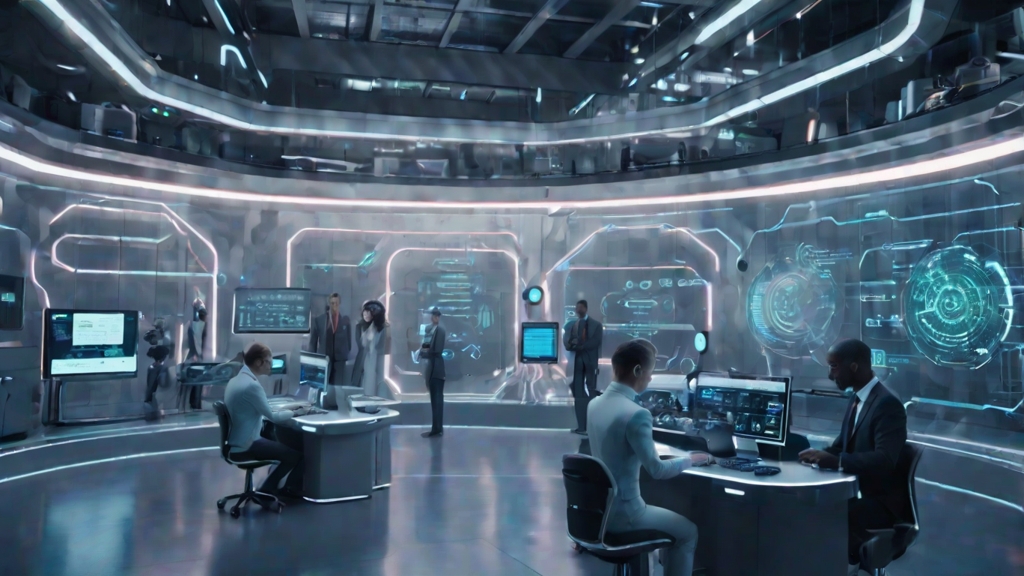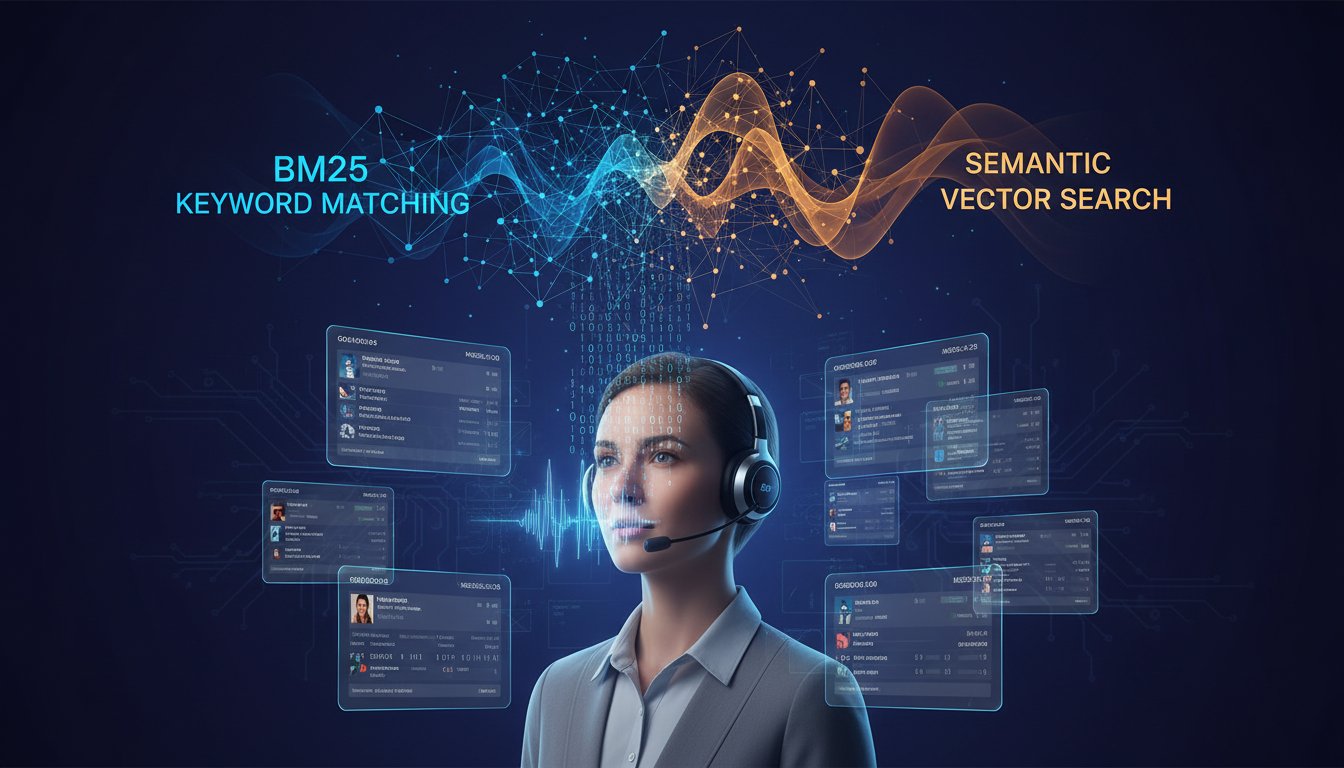Imagine an enterprise where AI isn’t just a faceless algorithm crunching data in the background, but an active, engaging partner. Picture an AI that can not only understand complex queries about internal company knowledge but can also respond with a human-like voice and a friendly, virtual face, guiding you through processes or explaining intricate details. For years, this felt like science fiction, something reserved for blockbuster movies. We’ve interacted with chatbots that felt clunky, voice assistants that misunderstood half our requests, and automation tools that required a PhD to configure. The promise of truly intelligent, interactive assistance often fell short, leaving us to navigate complex information systems and tedious workflows largely on our own. This gap between the potential of AI and its practical, user-friendly application in day-to-day enterprise tasks has been a persistent challenge. Businesses are drowning in data, yet their employees struggle to find the right information quickly or get personalized support for their specific needs. The tools exist, but connecting them into a cohesive, intelligent, and engaging experience has been the missing piece.
The core challenge lies in moving beyond siloed AI functionalities. We have powerful Large Language Models (LLMs) that can generate text, amazing text-to-speech engines that can create natural-sounding audio, and innovative platforms that can generate video avatars. However, enterprises need these technologies to work in concert, grounded in their specific, proprietary knowledge. How do you build an AI that not only knows your company’s information but can also communicate it effectively and engagingly, automating tasks in a way that feels like a natural extension of human capability? How do we bridge the gap from basic chatbots to truly interactive AI agents that can understand context, access specific internal data, and respond in a multi-modal fashion? This is particularly crucial as enterprises look to leverage AI for complex internal processes, from HR queries and IT support to sophisticated R&D information retrieval and personalized employee training.
The good news is that we are now at a technological inflection point where building such advanced AI agents is within reach. The solution lies in combining the power of Retrieval Augmented Generation (RAG) – to provide the AI with specific, up-to-date knowledge – with cutting-edge tools like ElevenLabs for realistic voice generation, HeyGen for compelling avatar-based video responses, and workflow automation platforms like Zapier to orchestrate these components seamlessly. This isn’t just about making AI “prettier”; it’s about making it fundamentally more effective, accessible, and integrated into the fabric of enterprise operations. Imagine an AI assistant that can verbally explain a complex new company policy, show a quick video tutorial created on the fly by an AI avatar, and even guide an employee through submitting a related form – all orchestrated through a no-code/low-code automation platform.
In this article, we’ll explore a visionary yet practical approach to building a Proof of Concept (POC) for an AI agent designed for enterprise automation. We will delve into how these distinct technologies—RAG, advanced voice synthesis, AI-driven video avatars, and workflow automation—can be synergized. Our focus will be on creating an AI agent that feels more like a knowledgeable colleague than a rigid program. We’ll outline the conceptual steps to build such a POC, highlighting how you can leverage these tools to automate tasks, enhance information access, and create truly engaging user experiences. This isn’t just a theoretical exercise; it’s a glimpse into the near future of enterprise AI, a future where AI agents become indispensable partners in productivity and innovation.
The Vision: Intelligent, Conversational AI Agents in the Enterprise
Why AI Agents are the Next Frontier in Automation
The buzz around AI agents isn’t just hype; it’s a reflection of a significant technological leap. As noted by Lakshmi Raman, the CIA’s director of AI, the agency views “agentic AI” as a transformative technology capable of independently performing complex tasks and interacting with various systems. This sentiment is echoed across industries, with Cisco highlighting that AI’s “agentic era” is poised to significantly augment worker capacities rather than merely replace them.
These agents aren’t just pre-programmed bots; they are designed to understand goals, make decisions, and take actions across different software and data sources to achieve those goals. This represents a shift from task-specific automation to more holistic, intelligent assistance. Think of an agent proactively identifying a sales opportunity from CRM data, drafting a personalized outreach email, and scheduling a follow-up, all with minimal human intervention. This is the power enterprise AI is beginning to unlock.
The Indispensable Role of RAG in Grounding AI Agents
For an AI agent to be truly useful within an enterprise, it cannot rely solely on the general knowledge of its underlying Large Language Model (LLM). It needs access to specific, current, and proprietary company data. This is where Retrieval Augmented Generation (RAG) becomes critical.
RAG enhances LLMs by connecting them to external knowledge bases, allowing them to retrieve relevant information before generating a response. As AWS explains, semantic search capabilities within RAG systems enable LLMs to access and process vast, diverse external knowledge sources, ensuring responses are not only fluent but also factual and contextually appropriate to the organization’s unique environment. Furthermore, as Tonic.ai points out, the use of metadata and knowledge graphs is crucial for boosting vector search in RAG systems, providing deeper context and improving the relevance of retrieved information. An AI agent powered by RAG can thus answer questions about the latest internal policies, provide details from a specific customer’s interaction history, or summarize recent project updates, all based on the company’s own verified data.
Core Components of Our Visionary POC AI Agent
Retrieval Augmented Generation (RAG): The Knowledge Core
At the heart of our intelligent agent lies Retrieval Augmented Generation. RAG is the mechanism that ensures our AI isn’t just making things up or relying on outdated, generic information. It works by first retrieving relevant documents or data snippets from a specified knowledge base (e.g., company wikis, HR manuals, product documentation, CRM notes) based on the user’s query.
This retrieved information is then provided as context to the LLM, which uses it to generate a precise and informed response. This approach dramatically reduces hallucinations (AI making up facts) and ensures the AI’s answers are grounded in your organization’s reality. For enterprises, this means an AI that can accurately discuss internal procedures, specific project details, or customer histories, transforming it from a novelty into a reliable work tool. The “unglamorous world of data infrastructure,” as Reuters notes, is foundational here, as robust data management is key to effective RAG.
ElevenLabs: The Voice of Your AI Agent
Once our RAG system has formulated an accurate textual response, we need a way to communicate it naturally. This is where ElevenLabs comes in, offering state-of-the-art AI voice synthesis. Static, robotic voices can create a disconnect and reduce user engagement.
ElevenLabs provides incredibly realistic and emotive voices, capable of conveying nuance and making interactions feel more human. Imagine an AI agent that can explain a complex financial report with a calm, authoritative tone, or guide a new employee through onboarding with a warm, encouraging voice. This level of voice quality is crucial for applications like internal training modules, customer service interactions, or accessibility features. For our POC, ElevenLabs will give our AI agent a voice that builds trust and enhances the user experience. If you’re looking to give your AI projects a truly natural voice, you can explore their offerings and try for free now.
HeyGen: The Visual Embodiment of Your AI Agent
To further enhance engagement and provide a more complete interactive experience, we introduce HeyGen for AI avatar generation. While voice adds an auditory dimension, a visual representation can make the AI agent even more approachable and relatable.
HeyGen allows you to create realistic AI avatars that can deliver messages, explain concepts, or guide users through processes. Instead of just hearing a response, users can see a virtual assistant speaking to them. This is particularly powerful for creating training materials, internal communications, or even personalized video messages. For example, an AI agent could use a HeyGen avatar to deliver a weekly project update video, customized for different teams. Combining the RAG-generated script with ElevenLabs’ voice and HeyGen’s avatar, we can create compelling video responses that are far more engaging than plain text or simple audio. To start creating your own AI-powered videos, you can click here to sign up with HeyGen.
Zapier: The Orchestrator of Intelligent Workflows
Having powerful individual components—RAG, ElevenLabs, HeyGen—is one thing; making them work together seamlessly is another. This is where a workflow automation tool like Zapier becomes indispensable.
Zapier acts as the connective tissue, allowing you to create automated “Zaps” (workflows) that trigger actions in one app based on events in another, all without needing to write complex code. In our POC, Zapier will orchestrate the flow of information: a user query might come in via a form, Zapier sends it to the RAG system, takes the text response, passes it to ElevenLabs to generate audio, then sends both the text and audio to HeyGen to create a video, and finally delivers the video response back to the user or a designated platform. This ability to connect disparate AI services and business applications is key to building functional, scalable AI agents.
Building Your POC: A Step-by-Step Conceptual Guide
Defining the Use Case: An Internal HR Policy Assistant
To make our POC concrete, let’s imagine building an AI agent to assist employees with HR policy questions. Many employees struggle to find specific information within lengthy HR documents. Our AI agent will provide quick, accurate, and engaging answers.
For instance, an employee could ask, “What is our company’s policy on parental leave,




